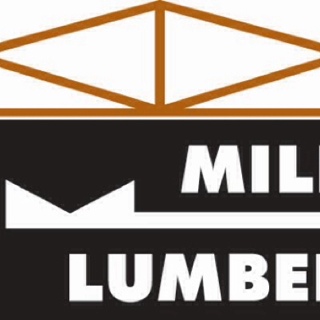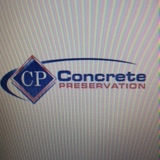Title Page
-
Document No.
-
Trailer Inspection Checklist
-
Essential Energy
-
Conducted on
-
Hartrite
-
Location
-
Personnel
-
Trailer Make
-
Trailer Model
-
Registration Number
-
Fleet Number
-
VIN Number
-
BodyType
-
Colour
-
Tare Weight
-
GVM
Trailer Photos
-
Photo FRONT
-
Photo RH SIDE
-
Photo REAR
-
Photo LH SIDE
-
All Defect are to be supported by notation and images
Section 1 Compliance
-
1.1 Number plate in good condition and meets compliance
-
1.2 Check compliance plate for correct VIN
-
1.3 Trailer Tare and GVM Labels fitted and legible,
-
1.4 Trailer weighed and tare weight confirmed as correct against labels on trailer.
Section 2 Trailer tow coupling, safety chains, Drawbar and mounting.
-
2.1 Check tow coupling for condition and compliance with RMS regulations and (AS4177.3)
-
2.2 Ball coupling body must be marked with the manufacturer's brand or trademark: the mark '50'; the maximum rating of a coupling as applicable e.g. 750kg, 2000kg, 35000kg.<br>All couplings must be of a reputable brand
-
2.3 Any coupling that does not have a manufacturer's brand or trademark and associated markings must be replaced
-
2.4 AL-KO Off Road trailer coupling if fitted to be removed and replaced with an appropriately rated conventional ball coupling.
-
2.5 Coupling latch to have double locking facility
-
2.6 Check locking pin is secured to handle permanently with flexible cable.
-
2.7 Check override couplings for wear and compliance.
-
2.8 Check override coupling latch for condition and function.
-
2.9 Inspect coupling for secure mounting.
-
2.10 Check tow couplings adjustment mechanism, adjustment screw and locking nut for condition and function.
-
2.11 All trailer are fitted with dual safety chains.
-
2.12 Trailers up to 750 kg GVM to have a minimum of 8mm rated chain and rated D shackle for attachment.
-
2.13 Trailers between 750 kg GVM and 3500 kg GVM are to have a minimum of 10mm rated chain and 1.5t rated D-shackle for attachment.
-
2.14 Safety chain comply with Australian Standard 4177.4 for trailers up to 3500 kg. Any damage or non-compliant chains are to be replaced.
-
2.15 Safety chains to be mounted to draw bar sides or through a top plate only, welded links to face forward and be on or above the centreline (underside mounting not acceptable.
-
2.16 Safety chains must be permanently attached to the trailer, trailers up to 3500 kg can be attached by welding, the weld must extend around 50% of the circumference of the link and the adjoining link must have free movement.
-
2.17 Chains to be of suitable length for cross over coupling.
-
2.18 Inspect the draw bar for any deformities, cracking or corrosion.
-
2.19 Inspect any draw bar mountings or accessories. Also check for noncompliance or unsafe attachment mounts on the bar.
-
2.20 Inspect jack leg is functional and safe, replace any damaged components a required.
-
2.21 Inspect any jackleg swivels and locking mechanisms, ensure they are functional and safe
Section 3 Trailer Structure and Body.
-
3.1 Check the condition of main frame. Ensure the structure is sound and free of excessive distortion or corrosion.
-
3.2 Check condition of body/tub/tray.
-
3.3 Check the tube/tray flooring is sound and secure.
-
3.4 Inspect tailgates and folding or removable sides for condition of hinges, latches and structure.
-
3.5 Tailgate latches to have double latching with a clip and lanyard.
-
3.6 Any ramps are to be checked for condition along with any pivots and latching system. Check stowage of any removable ramp is suitable.
-
3.7 Ramp latches to have double latching with a clip and lanyard.
-
3.8 Inspect condition and suitability of tie rails and/or tie down points.
-
3.9 Inspect condition of mudguards and mud flaps.
-
3.10 Check removable mudguards for correct operation and latching.
-
3.11 Any latching pins or over centre latches to have a secondary locking device permanently mounted (e.g R pin on wire rope).
-
3.12 Check suspension mounting points and spring slide guides for wear or damage.
-
3.13 Tipping body and actuator pivots to be checked for condition and security. Pivot points are to be lubericated.
-
3.14 Tipping body latch down systems to be checked, double locking latching is required.
-
3.15 Equipment trailers accessories stowage areas are to be checked for suitability and condition to ensure secure storage.
-
3.16 Fluid trailers are to be checked for any signs of leakage and secure mounting of storage containers.
-
3.17 Check generator trailers for secure mounting of the generator.
Section 4. Suspension
-
4.1 Check condition of Spring Packs, Spring Pack U Clips, Spring Eyes, Hangers, Track Rods, Bushes, Pins/Bolts, Spring Rockers [Dual Axle], Pivot Bushes, Pins & Nuts, U-Bolts and retainer nuts.<br>
-
4.2 Check alignment of suspension components.
-
4.3 Lubricate/grease suspension components as required.
-
4.4 Inspect axles for damage or distortion.
-
4.5 Check wheel bearings for condition and correct adjustment. Remove grease cap inspect condition of grease. Repack if required.<br>
Section 5 Braking Systems.
-
5.1 Check the braking system is compliant to current standards and trailer rating.
-
5.2 Check operation of Service Brakes and Park Brakes.
-
5.3 Inspect condition of the brake drums, discs, linings or pads and associated components.
-
5.4 Check brake cables for correct routing, damage and adjustment.
-
5.5 Check any brake cable adjusters for function.
-
5.6 Check park brake lever and ratchet lock assembly.
-
Override systems (not for trailers above 2000kg GTM)
-
5.7 Check override brake system is operational and adjusted correctly (if fitted).
-
5.8 Check hydraulic override systems for correct function (if fitted).
-
5.9 Check hydraulic brake master cylinder and fluid bowl.
-
5.10 Check hydraulic brake tubes and hoses for routing and condition.
-
5.11 Check condition of any hydraulic brake cylinders.
-
5.12 Check condition and level of brake fluid, change annually and bleed.
-
Electric brake systems (breakaway systems must be fitted to trailers above 2000kg GTM)
-
5.13 Check trailer plug is wired to the correct standard and braking systems are connected correctly (Essential Energy requirements must also be met).
-
5.14 Check operation of electric brake systems.
-
5.15 Check all wiring is in good order and routed correctly.
-
5.16 Check operation of brake activation magnet.<br>
-
5.17 Check operation of breakaway systems. (if fitted). Breakaway battery when activated and with trailer plug disconnected must hold trailer brakes and trailer stop lights on for at least 15 minutes. (Replace battery if of reduced capacity).
-
5.18 Check battery condition and is secured correctly.
-
5.19 If fitted with breakaway system the trailer must be checked with the towing vehicle and said vehicle must be equipped with an acceptable charging unit and warning device to monitor breakaway battery condition from the normal driving position.
-
5.20 Ensure battery is connected solely to the brake circuit not to any other circuits.
-
5.21 Check charging and charge indicating circuits for function.
-
5.22 Check mounting and positioning of the breakaway switch and pin.
-
5.23 Ensure breakaway pin cable is of the bungie cable type and is in good condition.
-
5.24 Check electric brake earth return circuit is wired through trailer plug and does not rely on suspension components or trailer coupling.
-
5.25 Ensure labelling is present for braking system requirements.
-
5.26 Adjust brakes as required.
Section 6 Wheels and Tyres
-
6.1 Check wheel rims for damage or distortion, including any spare wheels.
-
6.2 Check condition of wheel nuts and studs and retention.
-
6.3 Check alignment of wheel nut indicators.Ensure all indicators are fitted.
-
6.4 Check tyre condition including spare wheels. Inflate to the recommended pressures.
-
6.5 Check spare wheels are securely mounted.<br>Spare wheels must be secured by multiple points i.e. 2 bolts or single bolt and additional chain.
Section 7 Electrical, lighting and reflectors
-
7.1 Check trailer plug is of correct type, in good condition (contacts not corroded etc) and pin configuration is compliant to current standards (Essential Energy requirements must also be met).
-
7.2 Check electrical wiring for correct routing, in good condition and is compliant to current standards.
-
7.3 Check electrical wiring earth return circuit is wired through trailer plug and does not rely on trailer coupling.
-
Lighting
-
7.4 Trailer lights are to be in good condition, securely mounted and preferably should be multi voltage LED’s
-
7.5 All lighting requirements to meet ADR and RMS requirements
-
Reflectors
-
7.6 Reflectors are to be in good order and be compliant in type and mounting to the ADR and RMS requirements.
Section 8 Accessories
-
8.1 Check any cargo hold down points are in good condition and are fit for purpose for loads likely to secured.
-
8.2 Canopies and crates fitted to the trailer to be checked for compliance, condition, and secure mounting. Door/gates etc. attached to canopies or crates are to be checked for safe and correct operation.
-
8.3 Any trailer mounted toolboxes or storage containers are to be checked for compliance, condition, and secure mounting. Contents must be able to be safely contained.
-
8.4 Inspect any load rated cargo netting fitted to the trailer.
-
8.5 Check any cargo tarps are in good condition, fit for purpose including any associated bows, brackets, and tarp clips etc.
-
8.6 Check tipping trailer hydraulic components such as hoses, power packs and cylinders for condition, secure mounting, leaks, etc. Check routing of hydraulic lines and cabling.
-
8.7 Auxiliary batteries required for tipping trailers, oil recovery trailers etc should be in good condition and of appropriate size and capacity. They should be mounted securely and cabling should be of correct size and routed to standard (tow vehicles need to be equipped with suitable charging circuit and labelling to keep auxiliary batteries charged).
-
8.8 Fluid trailers to have adequate warning signage e.g. fluid type and not for drinking warnings
-
8.9 Pumps, engines, etc. associated with fluid transfer trailers are to be checked for safe, secure and compliant mounting












